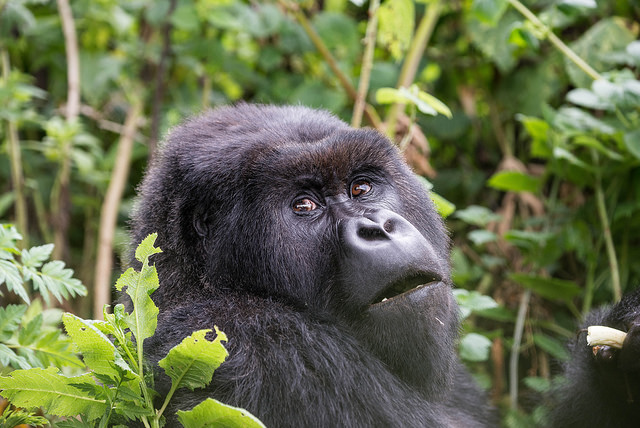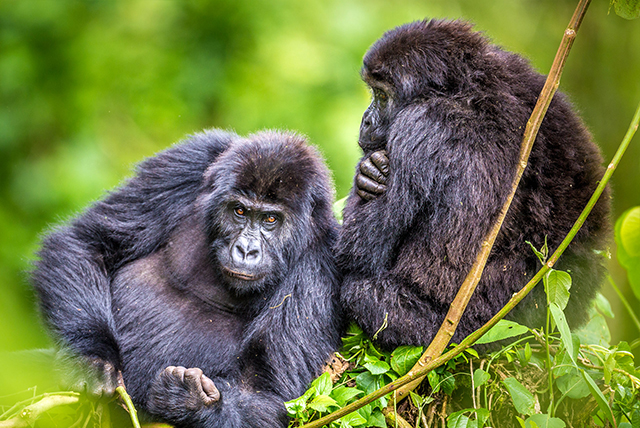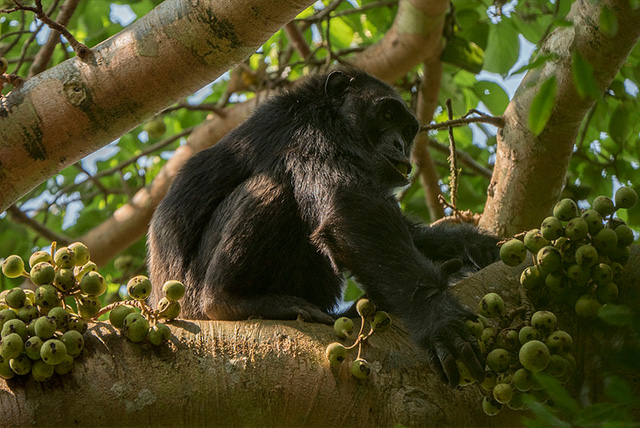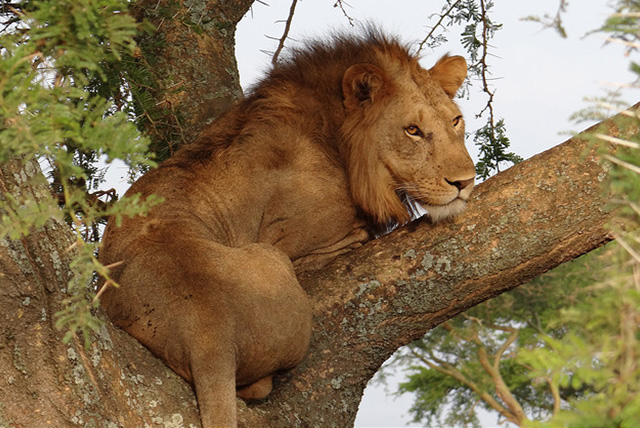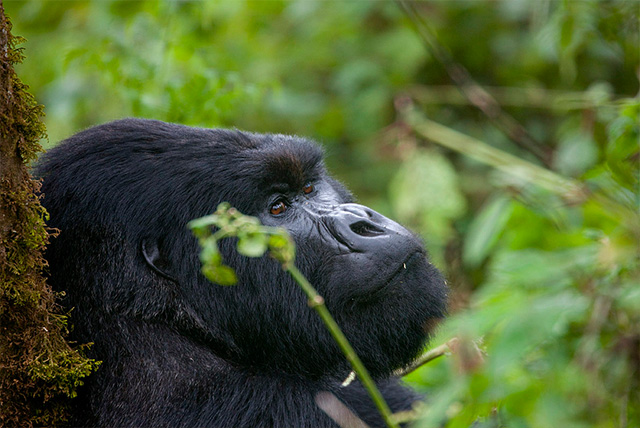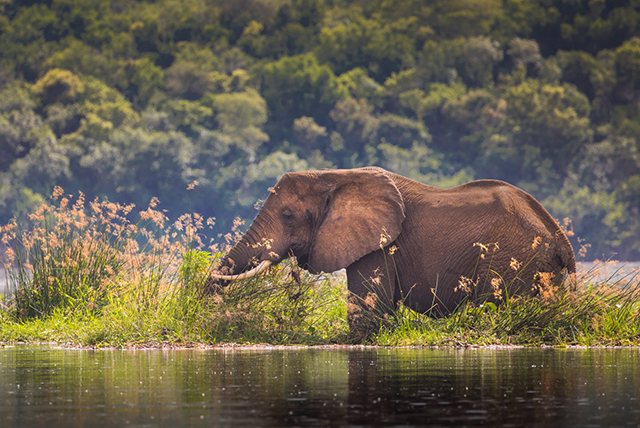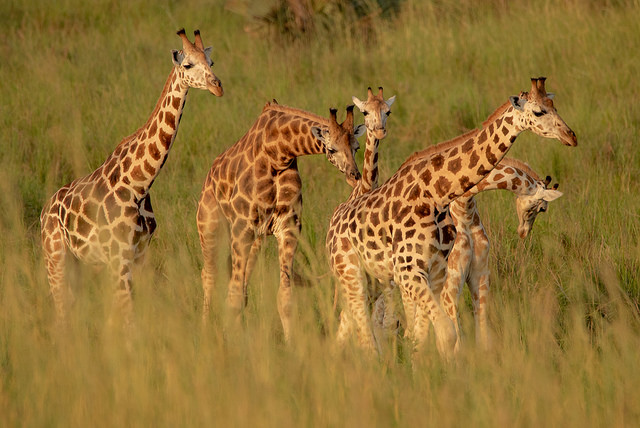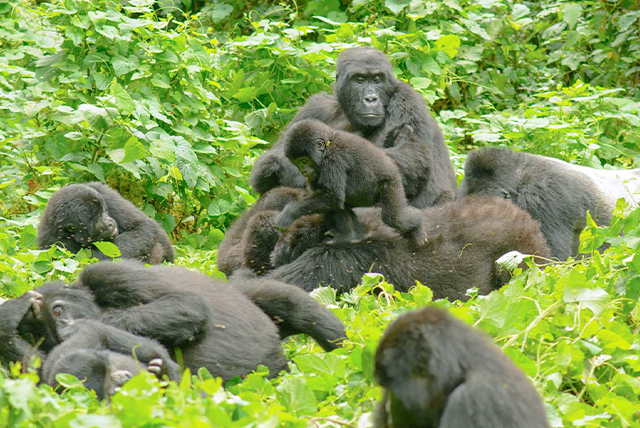Best Tanzania safaris
East Africa and South Africa Safari: Exploring the Differences and Determining the Best Option
Exploring the contrasts between East Africa and South Africa safaris, here are six essential differences to consider before your journey. Which destination will capture your spirit?
Which destination would you suggest for my safari: South Africa or Tanzania? How about an exhilarating safari that showcases the wild wonders of South Africa versus Kenya, or maybe an exciting showdown between Uganda and Kenya? Here are some of the frequent questions we receive from travelers eager to choose between a safari in Southern or East Africa.
Since 2018, we have been crafting remarkable African safaris for thousands of clients. Experience forms the bedrock of our understanding; we explore every corner of the destinations we recommend, ensuring our clients can trust that their itineraries are built on a reliable foundation.
So, an expedition in Southern or East Africa? Which one brings more excitement? Ultimately, it is all in your hands and what you seek. To help you navigate your travel choices, we have highlighted the key differences between the two regions.
East Africa: Location, Landscape, and Climate
The captivating landscapes of East Africa—Kenya, Tanzania, Uganda, and Rwanda—along with the enchanting islands of Seychelles and Zanzibar in the Indian Ocean, form the vibrant eastern part of the African continent.
Vast gatherings of untamed creatures and stunning vistas have brought renown to this region. East Africa boasts some of the most iconic landscapes on the planet, including the Great East African Rift and its towering giants, Kilimanjaro and Mount Kenya. In East Africa, you can find two of the world’s deepest lakes: Lake Tanganyika and the impressive Lake Victoria, which is the second-largest freshwater lake.
Even though East Africa sits near the equator, its weather surprises with an unexpected chill and dryness. The rich tapestry of East Africa’s abundant wildlife and its temperate climate creates an enticing destination for safaris throughout the year. No matter the time of year, you are bound to encounter fascinating wildlife across its vast plains.
Southern Africa
Southern Africa is home to a variety of countries, including Zimbabwe, Botswana, Malawi, Mozambique, Namibia, South Africa, and Zambia.
The landscape of southern Africa is a captivating tapestry, ranging from vibrant meadows and dense forests to stark, sun-baked deserts. The region boasts a diverse landscape, featuring low-lying coastal areas and majestic mountains, alongside a variety of ecoregions such as grassland, bushveld, semi-desert, savannah, and riparian zones.
The region’s diverse climates give rise to a rich tapestry of landscapes and terrain. The climate ranges from mild and subtropical in the southern and western regions to arid and temperate in the northern areas. The days bask in warmth and sunshine, while the nights bring a chill that sweeps across the landscape.
Top Safari Spots in East and Southern Africa
East Africa
Kenya
The Masai Mara National Reserve is a vibrant tapestry of life, where elephants, buffalo, zebras, giraffes, hyenas, and the famed big cats—lions, leopards, and cheetahs—thrive in the vast grasslands. Massive groups of wildebeests make their way back to the Serengeti after an epic journey that starts in July and continues through November. When migration season arrives and the national reserve buzzes with activity, opting for a stay in one of the private conservancies that line the Masai Mara is the ideal choice. You’ll find yourself near all the vibrant migration hotspots, making it easy to dive into the excitement, yet you can always retreat to a peaceful haven whenever you desire. Additionally, in contrast to the national reserve, you can engage in extraordinary activities such as bush walks, nocturnal game drives, and off-road game viewing.
Amboseli National Park: For an incredible opportunity to witness vast herds of elephants in East Africa, journey to Amboseli National Park, where lush wetlands flourish beneath the towering presence of Mount Kilimanjaro. Here, you can seize the ideal moment of wildlife set against the majestic Kili backdrop, creating that timeless postcard image. Amboseli is renowned for its horseback safaris and other distinctive experiences, along with remarkable wildlife encounters featuring cheetah, lion, buffalo, leopard, hyena, and giraffe.
Samburu National Reserve: As a gateway to the vast deserts of northern Kenya, the rugged landscape of Samburu National Reserve captivates the senses. The Samburu people have long inhabited this region, which is also a sanctuary for five rare and endangered species: the Beisa oryx, the reticulated giraffe, the Grevy’s zebra, the long-neck gerenuk, and the Somali ostrich. Experience the thrill of a Samburu safari with luxurious tented camps and hotels, complemented by unique activities such as wildlife viewing on camelback.
Laikipia: Increasingly, individuals are discovering the breathtaking high plains of Laikipia as a premier safari destination in all of Kenya. Lewa Wildlife Conservancy, dedicated to safeguarding black and white rhinos and Grevy’s zebras, stands as a remarkable testament to the power of conservation efforts in the nation. Incredible safari lodges and camps that embrace families turn this hidden gem into a sought-after destination, even with its limited number of visitors.
Tanzania Serengeti National Park: Around one-third of the globe’s wildebeests journey through Serengeti National Park from December to October, establishing it as one of the most vibrant wildlife destinations on the planet. A journey to Tanzania’s premier conservation area is an essential experience for both newcomers and experienced safari lovers alike. An extraordinary journey awaits you at any time of year in the Serengeti, a paradise teeming with a remarkable variety of wildlife.
Ngorongoro Crater: Approximately three million years ago, a volcano erupted and then collapsed, giving rise to the stunning Ngorongoro Crater. Home to over 25,000 species, this stunning natural wonder stands as one of Africa’s most awe-inspiring attractions and the largest preserved volcanic crater in the world. The crater is famous for its remarkable cliff-top accommodations, a rich tapestry of savannah, lakes, and forests, and for offering some of the most reliable opportunities to observe the Big 5 in East Africa. It is renowned for its stunning geological wonders.
Lake Manyara National Park: Despite its smaller scale compared to other African parks, Lake Manyara National Park boasts an impressive array of bird species, making it a remarkable destination for exploration. The lush forests brim with life, much like the vibrant bird species drawn to their enchanting surroundings. Moreover, it serves as an excellent spot to catch a glimpse of the rare tree-climbing lions. A breathtaking park, Lake Manyara is situated in a remarkable spot along the renowned northern safari route in Tanzania.
Ruaha National Park: Nestled in the lesser-explored safari region of Southern Tanzania, you’ll discover Ruaha National Park and Nyerere National Park, previously recognized as Selous Game Reserve. Remarkably pristine, expansive, and brimming with wildlife, these areas offer unforgettable safari experiences far from the bustling crowds.
Rwanda and Uganda
Being surrounded by endangered gorillas in their natural habitat and observing the fascinating family interactions of our ancient relatives is an experience that stands apart from any other wildlife encounter. Embark on an exhilarating journey through the lush rainforests of Volcanoes National Park in Rwanda or the dense greenery of Bwindi Impenetrable Forest National Park in Uganda, where you can encounter these magnificent creatures in their natural habitat.
Southern Africa
Botswana
Okavango Delta: The Okavango Delta is the vibrant core of Botswana’s safari wonders and the nation’s lush treasure. Mokoros, the traditional dug-out canoes and the “vehicle” of the Delta for wildlife drives, offer the perfect way to navigate the meandering rivers of this vast interior river delta. The Okavango Delta is a paradise teeming with an astonishing array of birds and majestic wildlife, including fierce predators, and is frequently called Africa’s Eden.
Chobe National Park: Elephants reign supreme in the wild expanse of Chobe National Park in Africa. In Botswana’s dry season (May to October), travelers can experience remarkable and intimate encounters with these magnificent creatures in Chobe, where an estimated 120,000 animals roam within the world’s largest herd. ‘Predator City,’ the park’s secluded Savuti section, is renowned for the thrilling encounters between powerful hyena clans and majestic lion prides.
The Kalahari scrubland offers unique experiences, including quad bike (ATV) safaris and authentic cultural interactions with the San, Africa’s earliest people. From January through March (or later, depending on the season), it becomes the stage for Botswana’s breathtaking zebra migration.
Kruger National Park: Nestled within private game reserves, this park boasts an incredible array of wildlife, making it one of the most vibrant ecosystems in South Africa, complemented by opulent safari accommodations. It stands as one of the earliest safeguarded areas in Africa, renowned for its rich wildlife, featuring the elusive and sought-after cheetah and wild dog. Encountering the safari circuit’s A-listers—Africa’s renowned Big Five—elephant, buffalo, rhino, lion, and leopard—is almost certain at the Kruger.
Cape Town: Though not a traditional safari destination, Cape Town is a must-visit on any journey through South Africa. Cape Town, consistently recognized as one of the premier cities globally, boasts breathtaking beaches and majestic mountains, alongside rich historical landmarks and the lush valleys of the renowned Cape Winelands.
Namibia Sossusvlei: The mesmerizing sand dunes of Sossusvlei are often regarded as the highest dunes on the planet. One of Namibia’s most stunning destinations, Sossusvlei provides incredible photography opportunities and is situated within the expansive Namib-Naukluft National Park, the largest conservation area on the continent. Deadvlei, translating to “dead marsh,” is an eerily beautiful destination that you must experience. If you are seeking an unforgettable sunset experience, make your way up Big Daddy or Dune 45, each standing around 350 meters (1,150 feet) tall.
Etosha National Park: A favorite among safari enthusiasts, Etosha National Park is celebrated as one of Africa’s premier wildlife reserves. It is a paradise for plains game, giraffe, cheetah, and four of the Big Five (elephant, rhino, lion, and leopard)—and a self-driver’s dream, thanks to its fantastic roads. In the dry season of Namibia, spanning from May to October, an astonishing array of animals gathers around the temporary water holes close to Etosha Pan, a mineral pan that is four times the size of Los Angeles.
Zimbabwe
Hwange National Park: A staggering population of elephants, ranging from 40,000 to 60,000, roam freely in Hwange National Park, an expanse nearly ten times the size of London. In the dry winter months from May to October, wildlife congregates around the park’s shallow pans and artificial waterholes, earning Hwange the title “the land of giants.” This offers some of the most thrilling big game safari experiences in Africa.
Mana Pools: The stunning and untamed Mana Pools boasts lush floodplains, forests, and a vibrant riverine landscape. “Painted Wolves”—an episode of the acclaimed Dynasties series on BBC Earth—took place in the park. Exciting experiences such as game drives and nature hikes blend seamlessly with thrilling river activities like canoeing, kayaking, and fishing for guests to relish.
Victoria Falls: This iconic destination speaks for itself. Every adventurer exploring Southern Africa must carve out time to witness the grandeur of the world’s largest waterfall. From March to July, the Zambezi River swells to its peak, unleashing a thunderous cascade that makes the waterfall roar with incredible power. From September to December, as the water levels drop, thrilling experiences like white-water rafting and swimming in Devil’s Pool, a captivating waterfall eddy, become popular pursuits.
Zambia
South Luangwa National Park: For an exciting chance to encounter magnificent wildlife in Zambia, South Luangwa National Park is an excellent option. Elephants, hippos, buffalo, and well-fed lions gather around South Luangwa’s rivers and lakes in an extraordinary assembly, unparalleled by any other African park. South Luangwa, the birthplace of the walking safari, offers an ideal setting to experience the enchantment of traversing Africa just as the early explorers once did.
Lower Zambezi National Park: With its expansive floodplains and dramatic mountain scenery, Lower Zambezi National Park is a captivating and serene reserve. It provides exceptional water safari experiences and outstanding wildlife viewing in Africa. One of the most exhilarating ways to immerse yourself in nature is to paddle alongside magnificent animals like hippos, buffalo, and elephants in their natural habitat.
East Africa
While the thrill of game viewing in East Africa can be experienced year-round, it is important to be aware of the two distinct rainy seasons:
April to May (the season of abundant rainfall)
November to December (the brief rainy season)
Some lodges and campgrounds might temporarily shut down for essential maintenance and renovations during the prolonged rains, which tend to be more intense than the brief ones. Game viewing is often a challenge, as the rivers spill over their banks, dirt roads turn into sticky mud, and the rain seems to fall endlessly.
As the year unfolds, the parched winter gives way to fleeting showers. In the mornings, clouds assemble, creating a hot and muggy atmosphere, only to burst into spectacular showers in the late afternoons, albeit briefly. These present a variety of benefits:
They cleanse the atmosphere of impurities.
They bring a refreshing chill to all around them.
They spark the emergence of vibrant pastures.
They invigorate nearly lifeless rivers, drawing in animals for a refreshing drink.
Migratory birds return to the area, and thousands of newborn antelopes come into the world during the lush Green Season. Alongside the most brilliant light of the year, photographers often find themselves with expansive landscapes and unique wildlife encounters all to themselves during this season, creating a perfect opportunity for capturing stunning images. The Green Season offers an incredible opportunity for a safari experience, where wildlife is abundant, crowds are minimal, and costs are significantly lower.
Southern Africa
The dry season in Southern Africa, spanning from May to October, offers the perfect backdrop for thrilling safaris. The low and sparse vegetation makes it simpler to spot animals. As the season unfolds, finding animals takes a backseat since they often remain near water sources. At this time of year, the risk of malaria is quite low.
The wetter months from November to April offer an exhilarating opportunity for a safari adventure. The daytime warmth invites exploration, while the afternoons often bring thrilling bursts of thunderstorms. The sky is a brilliant blue, and the bush is vibrant and lush, creating a perfect backdrop for photography and birdwatching as all the migratory birds return from the northern hemisphere. The hours dedicated to tracking wildlife on game drives might appear lengthy, yet the rewards are undeniably fulfilling. Moreover, you’re probably going to experience the adventure all on your own!


